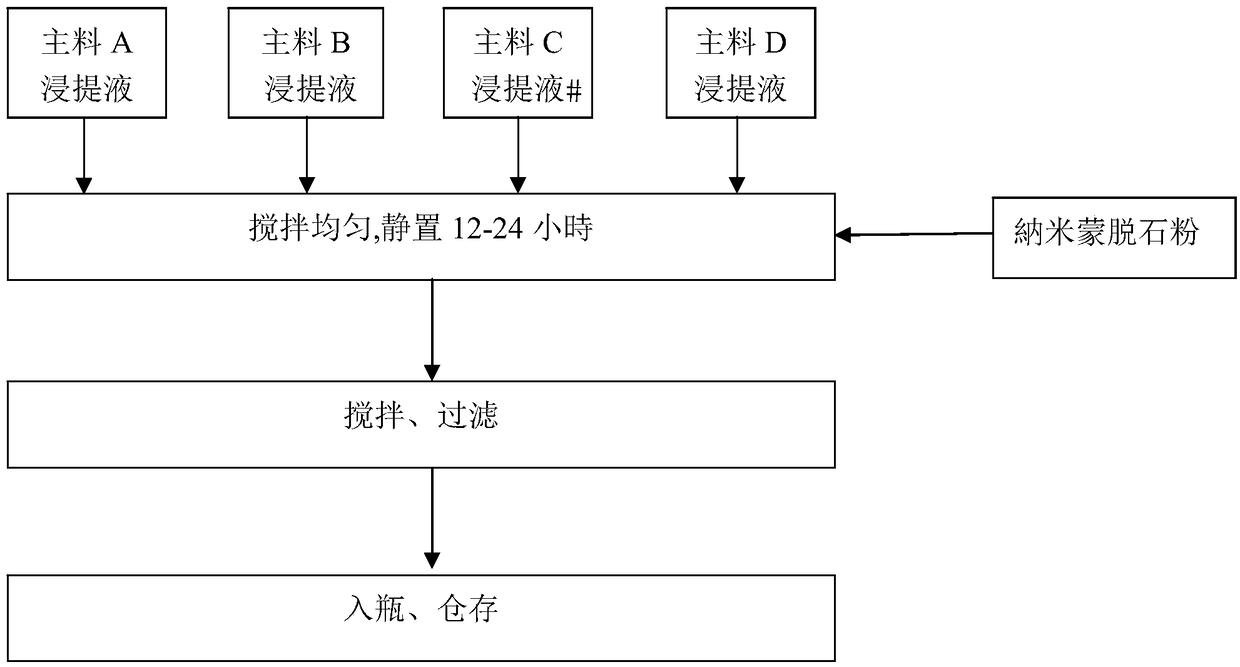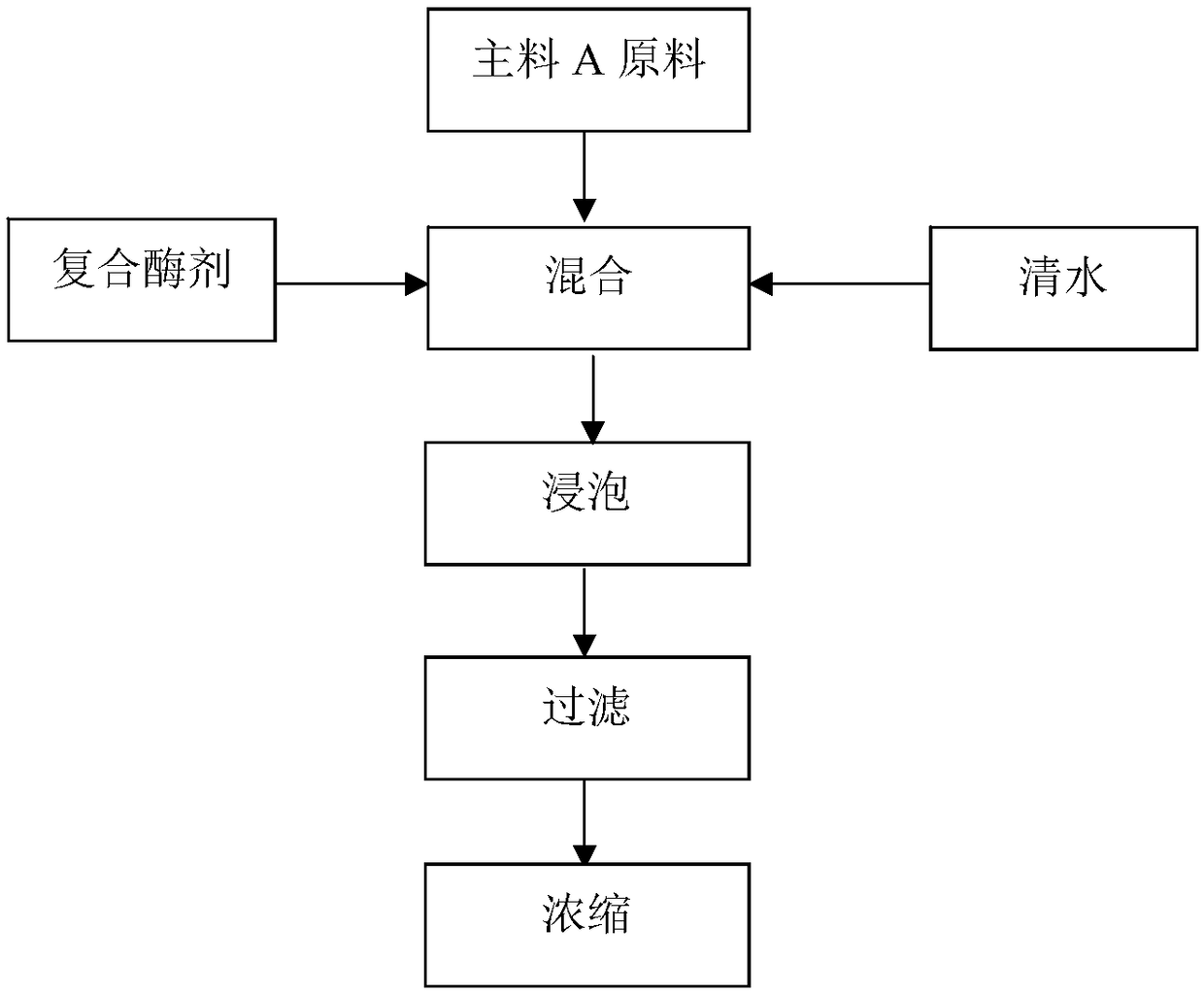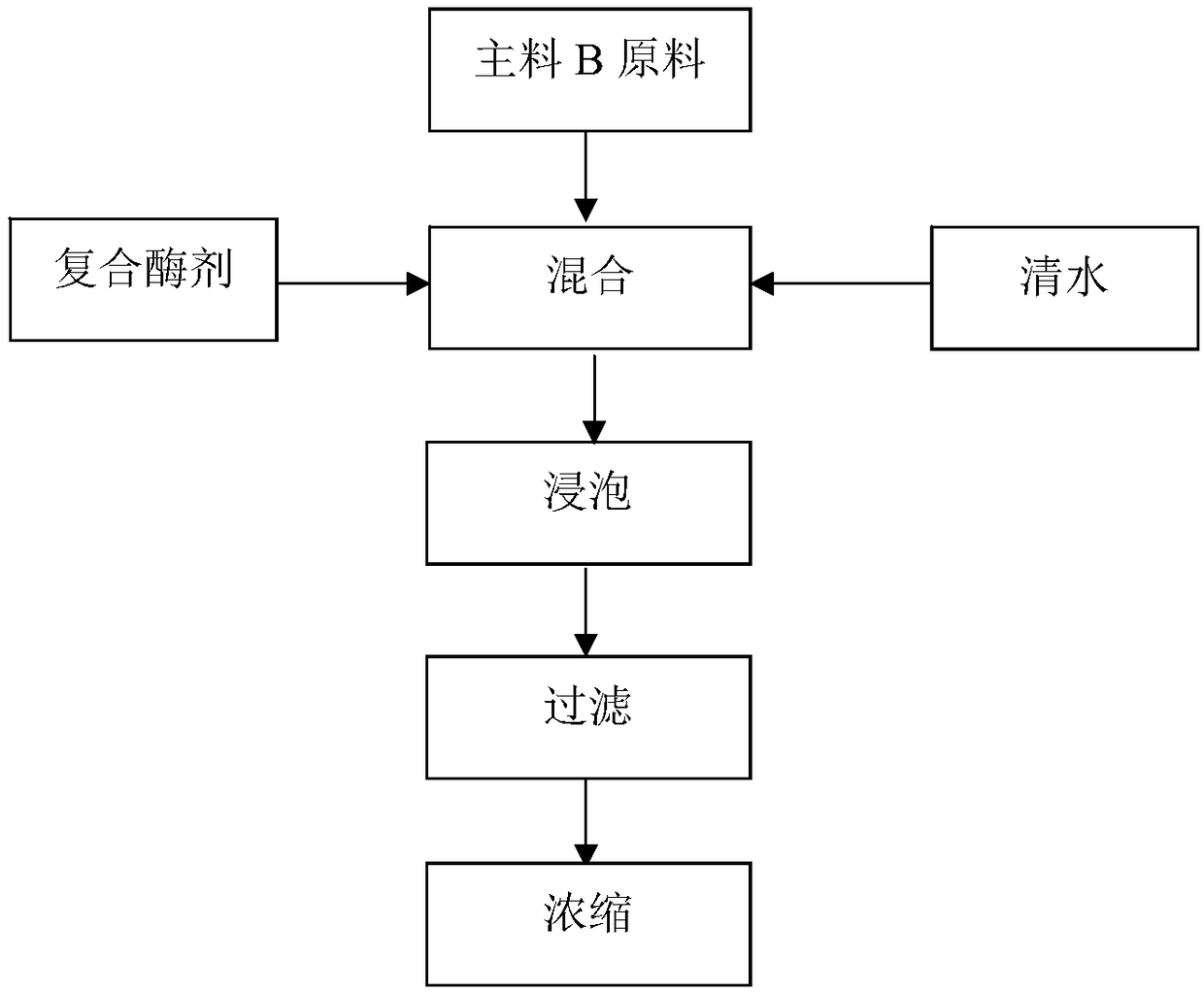Composite plant-sourced nanosized pesticide and preparation method thereof
A nano-pesticide and botanical source technology, applied in botany equipment and methods, plant growth regulators, plant growth regulators, etc., can solve the problems of restricting the sustainable development of agriculture, inefficient use of chemical pesticides, loss of soil and water sources, etc. , to achieve the effect of improving the deposition rate and retention on the leaves, reducing the loss of pesticides, and prolonging the effective period
- Summary
- Abstract
- Description
- Claims
- Application Information
AI Technical Summary
Problems solved by technology
Method used
Image
Examples
Embodiment l
[0093] 1. At room temperature, according to the mass parts, 400 parts of main material A leaching solution, 200 parts of main material B leaching solution, 200 parts of main material C leaching solution, 100 parts of main material D leaching solution, nano-membrane 100 parts of destoned powder, mix and stir evenly, let stand in the storage tank for 24 hours, and stir once during the period.
[0094] 2. After stirring, filter through a 200-mesh filter to obtain a composite plant-derived nano-pesticide.
[0095] 3. Measuring, bottle-packing and storing the composite botanical nano-pesticides.
[0096] Preparation of major ingredient A extract comprises the following steps:
[0097] 1. Crush the deer vine to 100 mesh to obtain the deer vine powder residue.
[0098] 2. Add 60°C clear water with 10 times the weight of the deervine powder residue and 0.5% compound enzyme agent of the weight of the deervine powder residue, mix evenly, and soak at 60°C for 24 hours.
[0099] 3. After...
Embodiment 1
[0112] Example 1 was applied to a honey pomelo garden in Meizhou, Guangdong, spraying 5 times, spraying 1 time every 20 days. Use 200ml per mu of land each time, mix with 30kg of clean water and spray evenly on leaves, branches and small green fruits. The honey pomelo tree is growing well, the control of diseases and insect pests reaches 90%, the yield increases by 25%, and the proportion of first-grade fruit (commodity) reaches 90%.
Embodiment 2
[0114] 1. At room temperature, according to the mass parts, 200 parts of main material A leaching solution, 200 parts of main material B leaching solution, 200 parts of main material C leaching solution, 200 parts of main material D leaching solution, nano-membrane 200 parts of destoned powder, mix and stir evenly, and let it stand in the storage tank for 36 hours, stirring twice during this period.
[0115] 2. After stirring, filter through a 200-mesh filter to obtain a composite plant-derived nano-pesticide.
[0116] 3. Measuring, bottle-packing and storing the composite botanical nano-pesticides.
[0117] Preparation of major ingredient A extract comprises the following steps:
[0118] 1. Crush the deer vine to 100 mesh to obtain the deer vine powder residue.
[0119] 2. Add 65°C clear water with 10 times the mass of deervine powder residue and 0.1% compound enzyme agent of deervine powder residue quality, mix evenly, and soak at 65°C for 96 hours.
[0120] 3. After filt...
PUM
 Login to View More
Login to View More Abstract
Description
Claims
Application Information
 Login to View More
Login to View More - R&D
- Intellectual Property
- Life Sciences
- Materials
- Tech Scout
- Unparalleled Data Quality
- Higher Quality Content
- 60% Fewer Hallucinations
Browse by: Latest US Patents, China's latest patents, Technical Efficacy Thesaurus, Application Domain, Technology Topic, Popular Technical Reports.
© 2025 PatSnap. All rights reserved.Legal|Privacy policy|Modern Slavery Act Transparency Statement|Sitemap|About US| Contact US: help@patsnap.com



